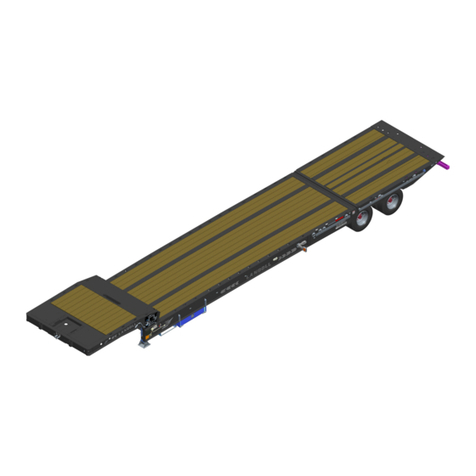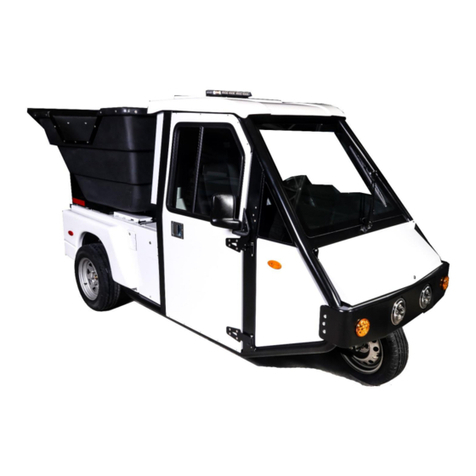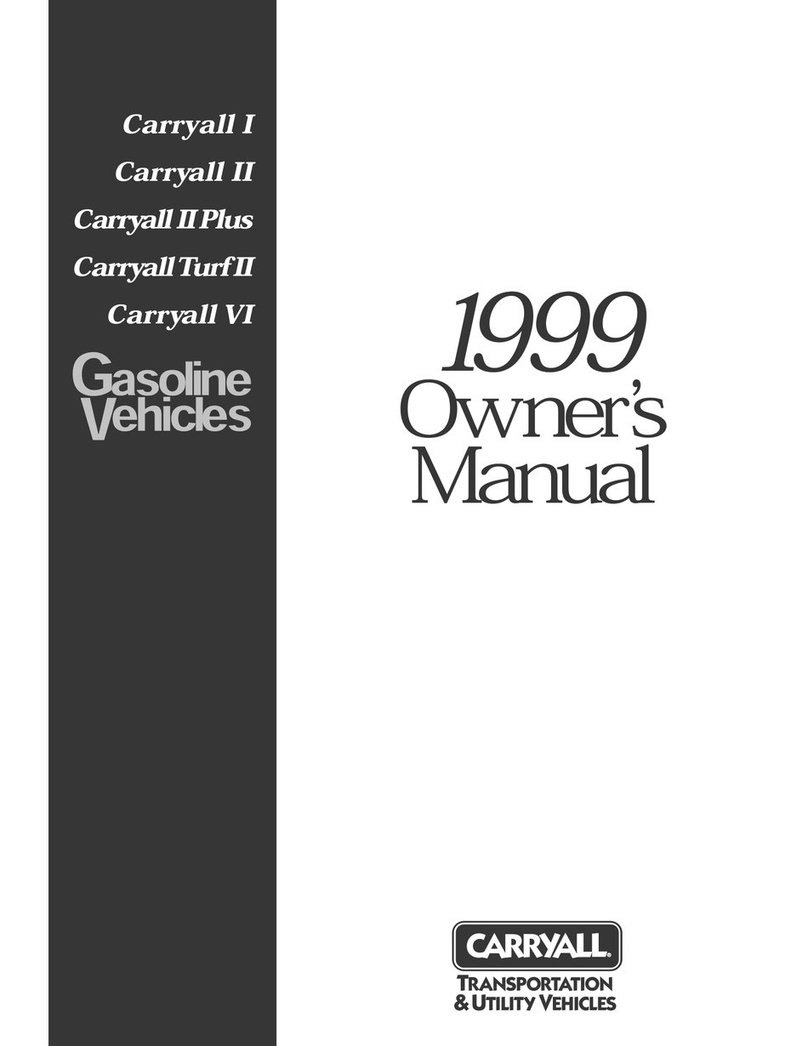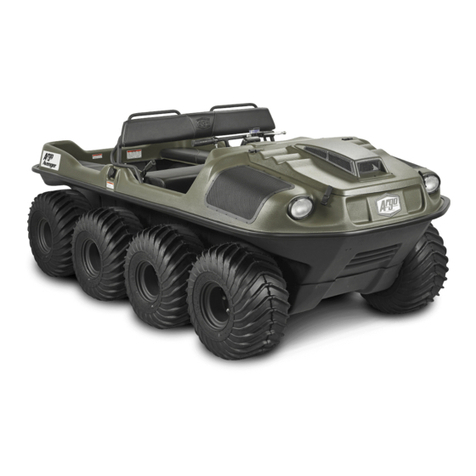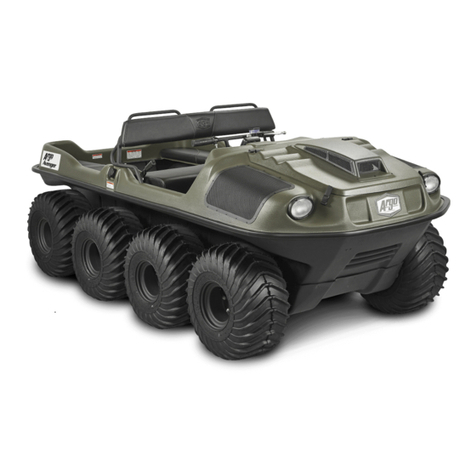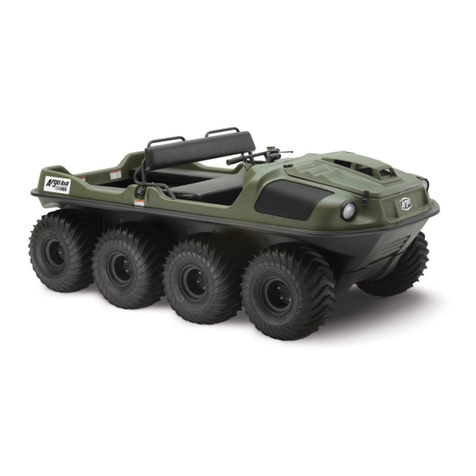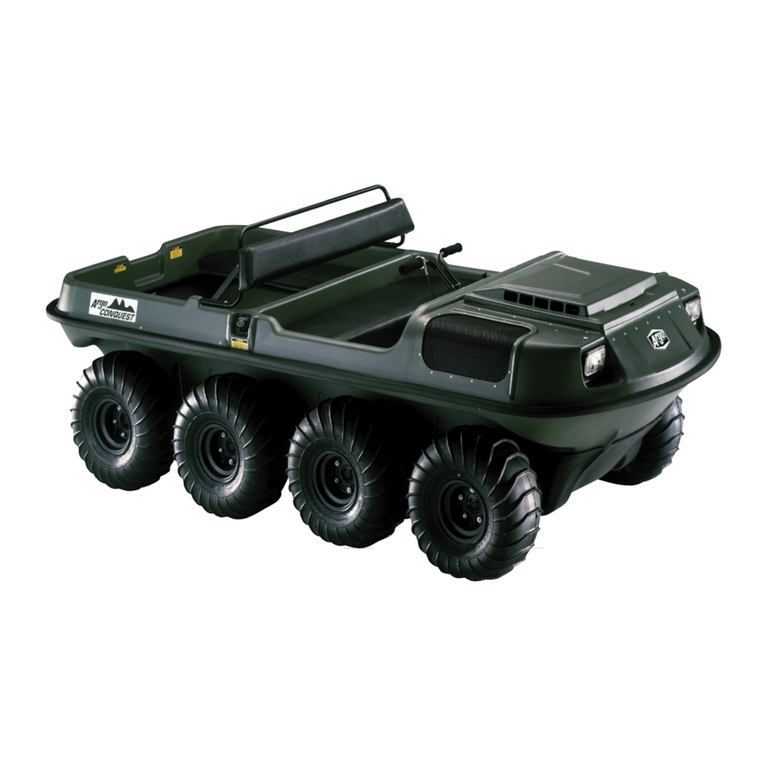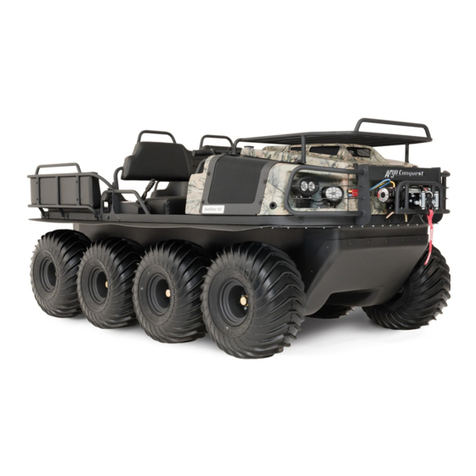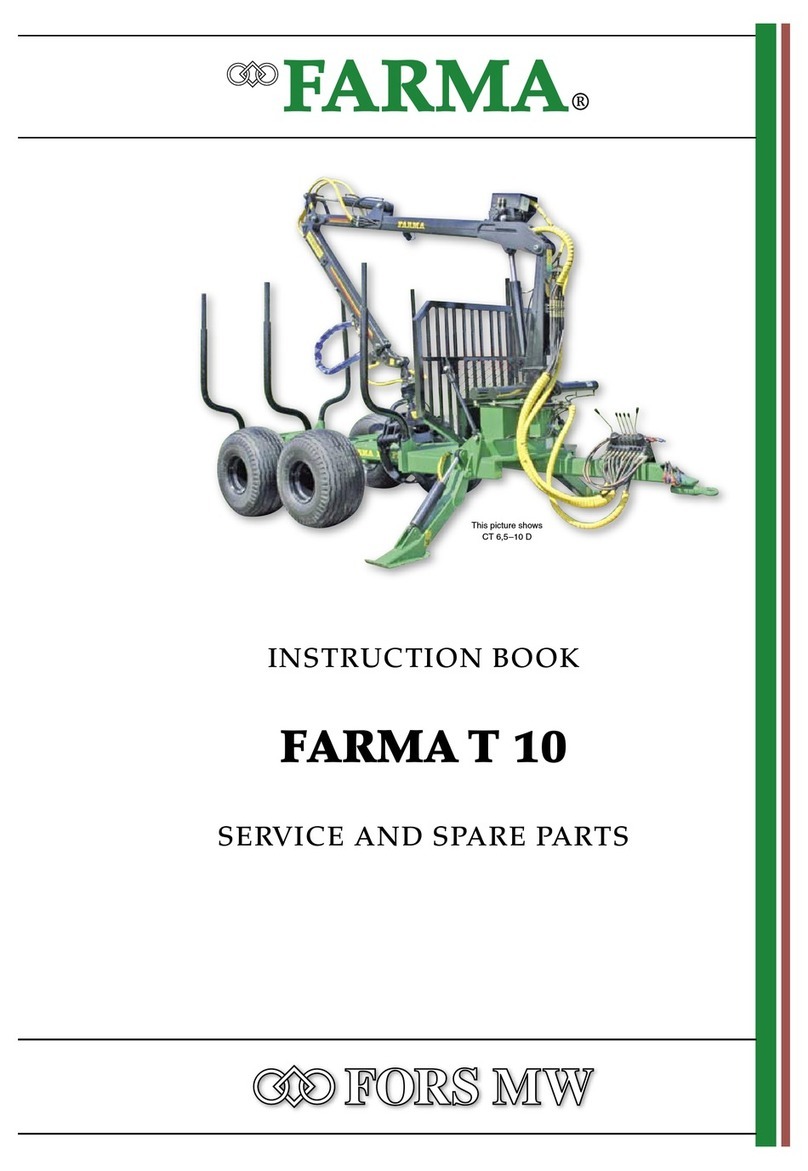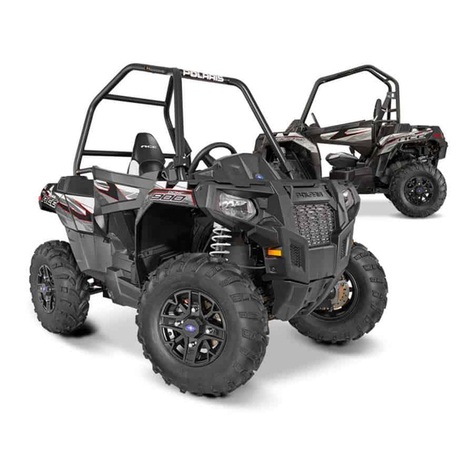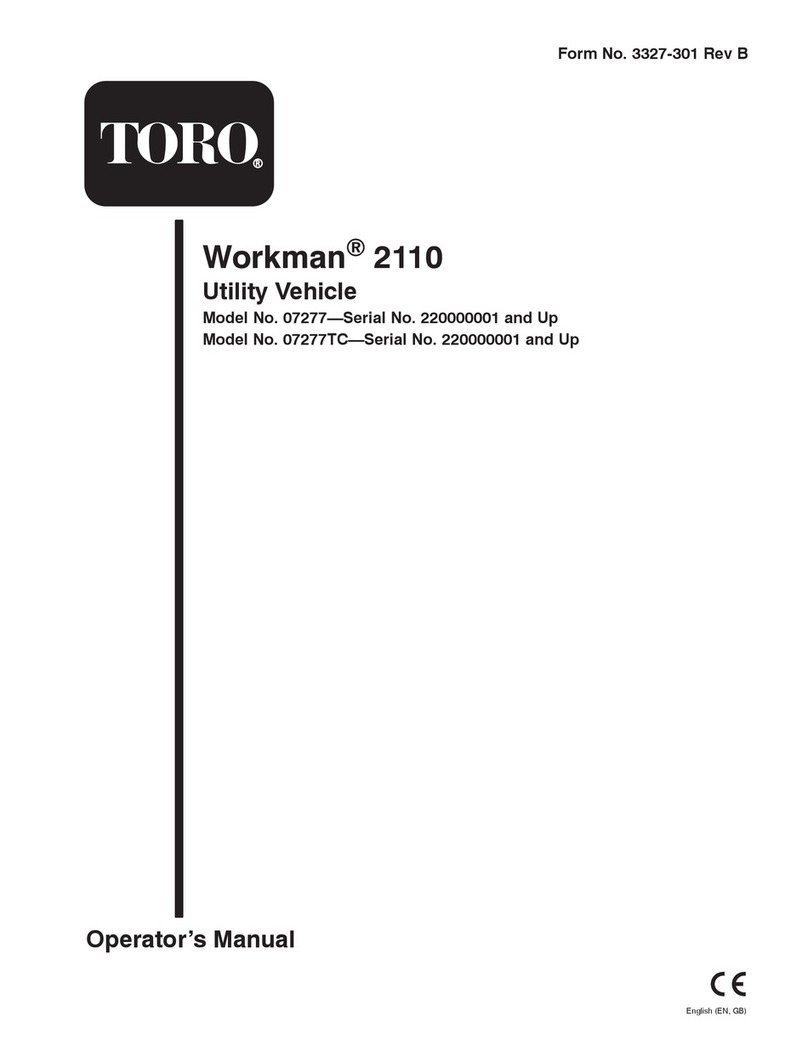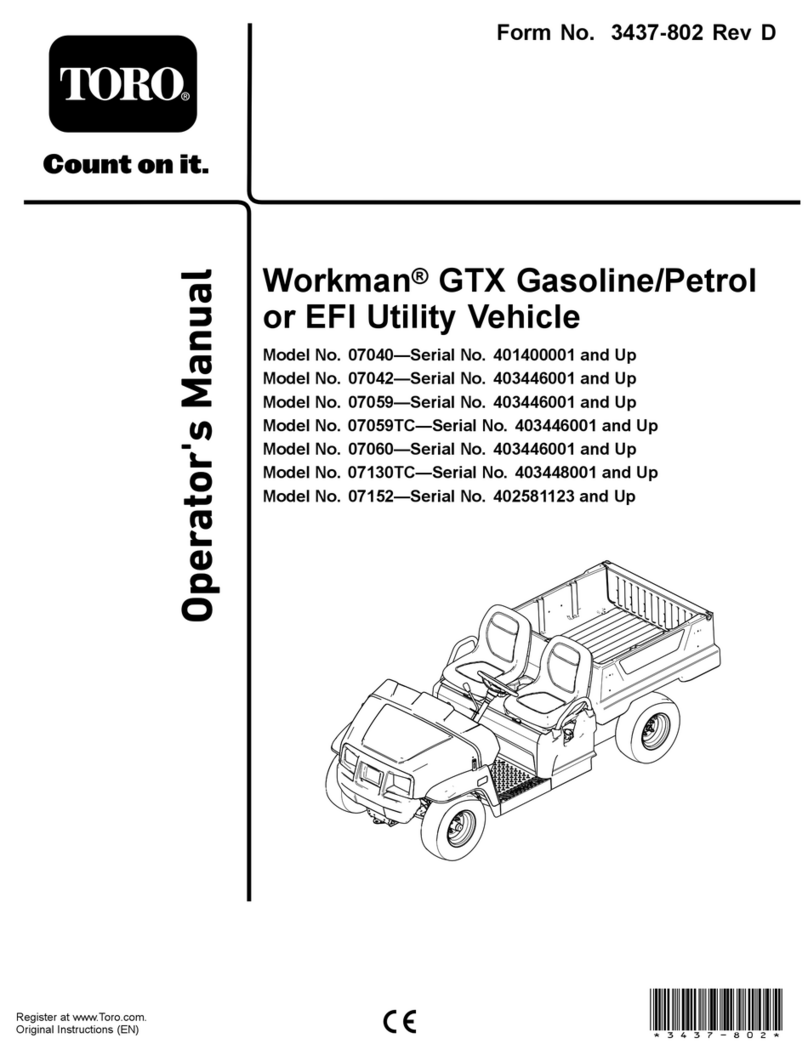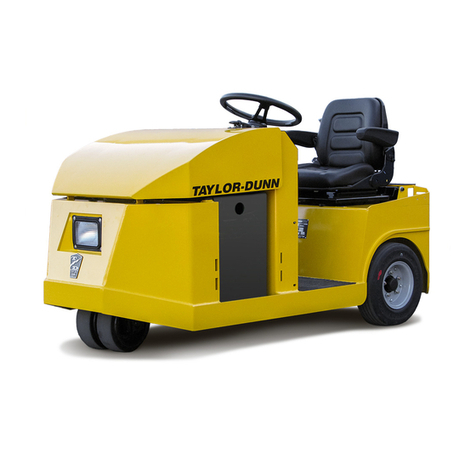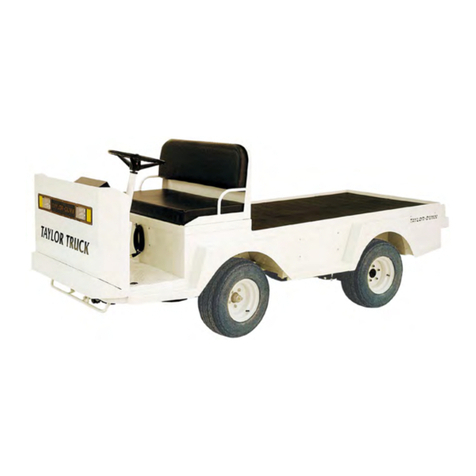
PREFACE
This manual describes the controls, operation and basic maintenance procedures for all VANGUARD, VANGUARD2, BIGFOOT,
RESPONSE and CONQUEST models of the ARGO from date of printing. Please take the time to read this manual carefully,
for your safety and that of others. By following these instructions, you will ensure extended, trouble free operation of your
vehicle.
For maintenance and adjustment of the engine, refer to the engine manufacturer’s operation and maintenance manual in-
cluded in your vehicle’s information package.
Before you drive your ARGO, make sure you understand how to use all controls, particularly the brakes and steering levers.
Learn how to drive your vehicle in an open level area, away from buildings, trees and other obstacles, until you are completely
familiar with its operating characteristics. Drive very slowly until your driving skills improve, and drive with caution and
consideration at all times. The risk of accident or injury is greatest during the first weeks of use. Take special care during this
period. ALWAYS RESPECT OUR ENVIRONMENT.
CAUTION TO THE ARGO OWNER/OPERATOR
•Make sure everyone who drives this vehicle receives proper operating instructions and reads this Operator’s Manual.
•No one under the age of 16 should be allowed to operate the ARGO.
•Never allow anyone under the influence of alcohol or any other intoxicating substance to drive or ride in the vehicle.
•Wear an approved safety helmet and eye protection when driving or riding in the vehicle.
•Special operating and safety procedures described in this manual must be observed before and during water operation as
outlined in Section 5.
•When operating your vehicle for extended periods of time, we recommend the use of approved hearing protection.
•Equip your vehicle with a fire extinguisher and a first aid kit.
•Equip your vehicle with basic tools for emergency repairs.
•Before starting your engine, check for spilt gasoline and wipe any up immediately. Gasoline is a potentially explosive
substance that can cause serious personal injury when ignited.
•Keep the floor pans secured in place at all times. Fingers, feet, animal tails or paws can be injured in the drive components
beneath the floor pans. The floor pans also help keep damaging debris out of the drive components.
•Make sure all passengers remain seated while the vehicle is in motion. Advise your passengers to hold onto the vehicle at
all times.
•Never overload your vehicle. Trying to steer an overloaded vehicle can overheat the brakes. This will lead to brake fade
which means loss of steering control and the ability to stop the vehicle. Overloading your vehicle can lead to premature
brake system failures and costly damage to drive chains, axles or bearings. Follow the recommended load capacity for your
vehicle listed in Section 1.
•Do not drive the vehicle at high speeds over unfamiliar or rough terrain. Personal injury or vehicle damage may result.
•Certain terrain and steep hills cannot be traversed safely with the Argo or any other vehicle. Do not attempt to drive over
terrain that is questionable.
•Do not drive your vehicle on asphalt or concrete roadways. When the vehicle turns, its tires skid on the driving surface.
Asphalt or concrete causes extensive tire wear.
•Use common sense at all times when driving your vehicle.
•The Argo engine hood is designed to stay fastened in place while the vehicle is being driven. If the Argo is transported by
truck or trailer, the hood should be removed and carried in the transport vehicle or secured in place on the Argo with rope
or tie down straps. Wind or turbulence at road speeds could result in the loss of the hood.
IMPORTANT
Operate this vehicle with safety constantly in mind. Off-road vehicles face unpredictable and often hazardous terrain condi-
tions. It is ultimately the operator’s responsibility to handle the vehicle safely within its limitations and to decide when and
where to travel.
II

